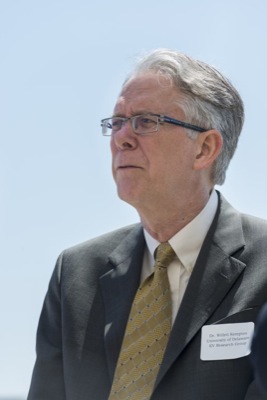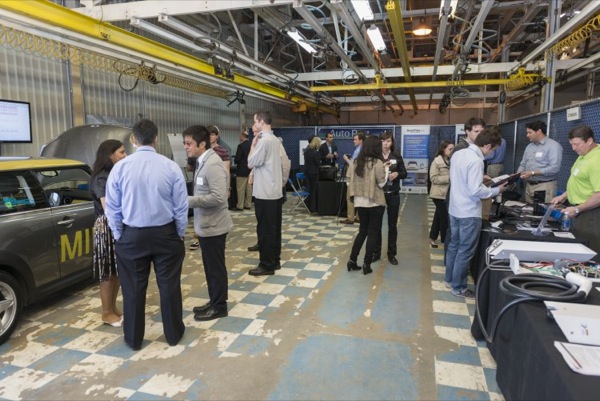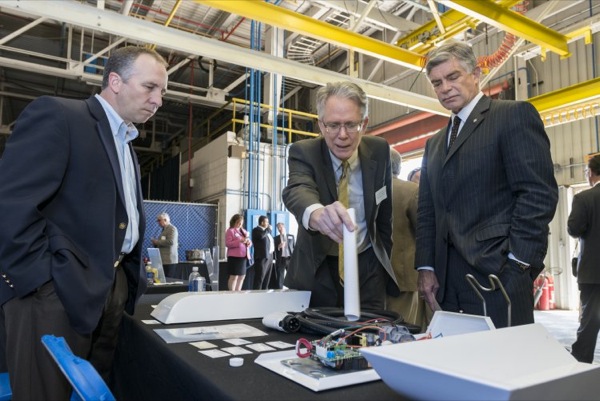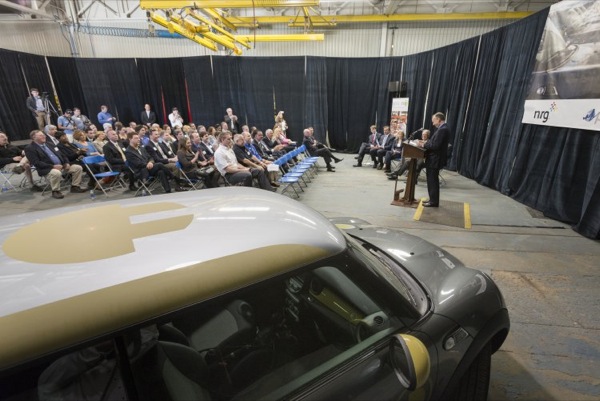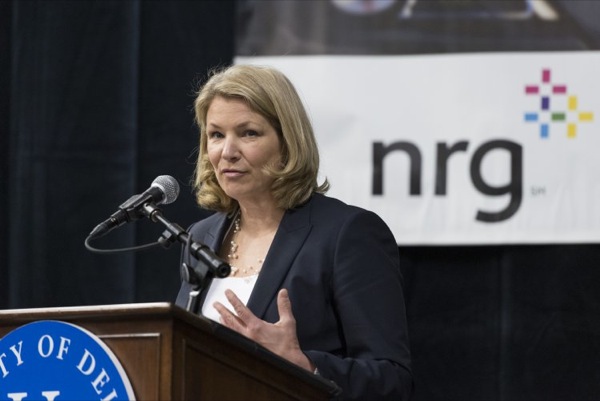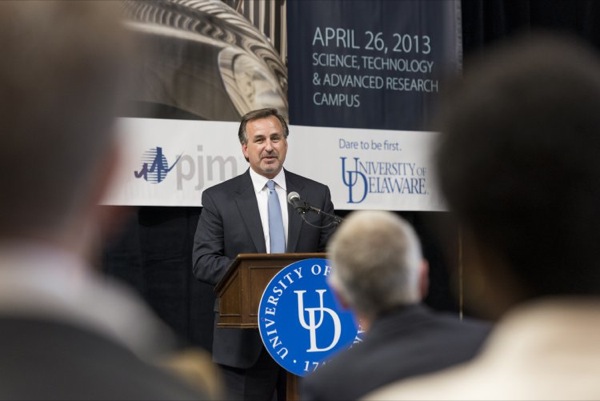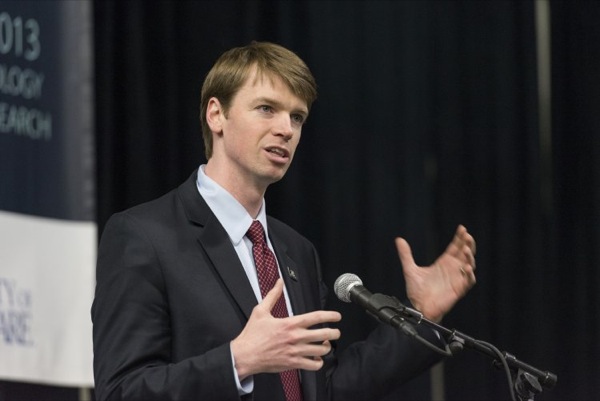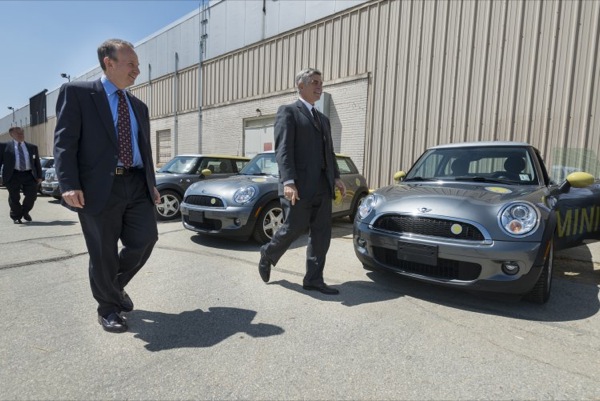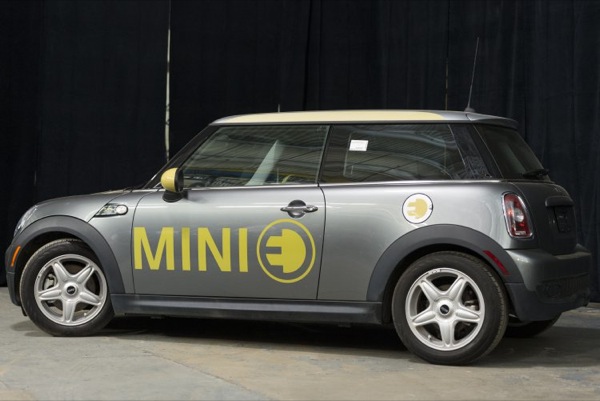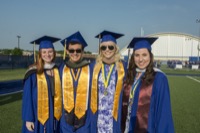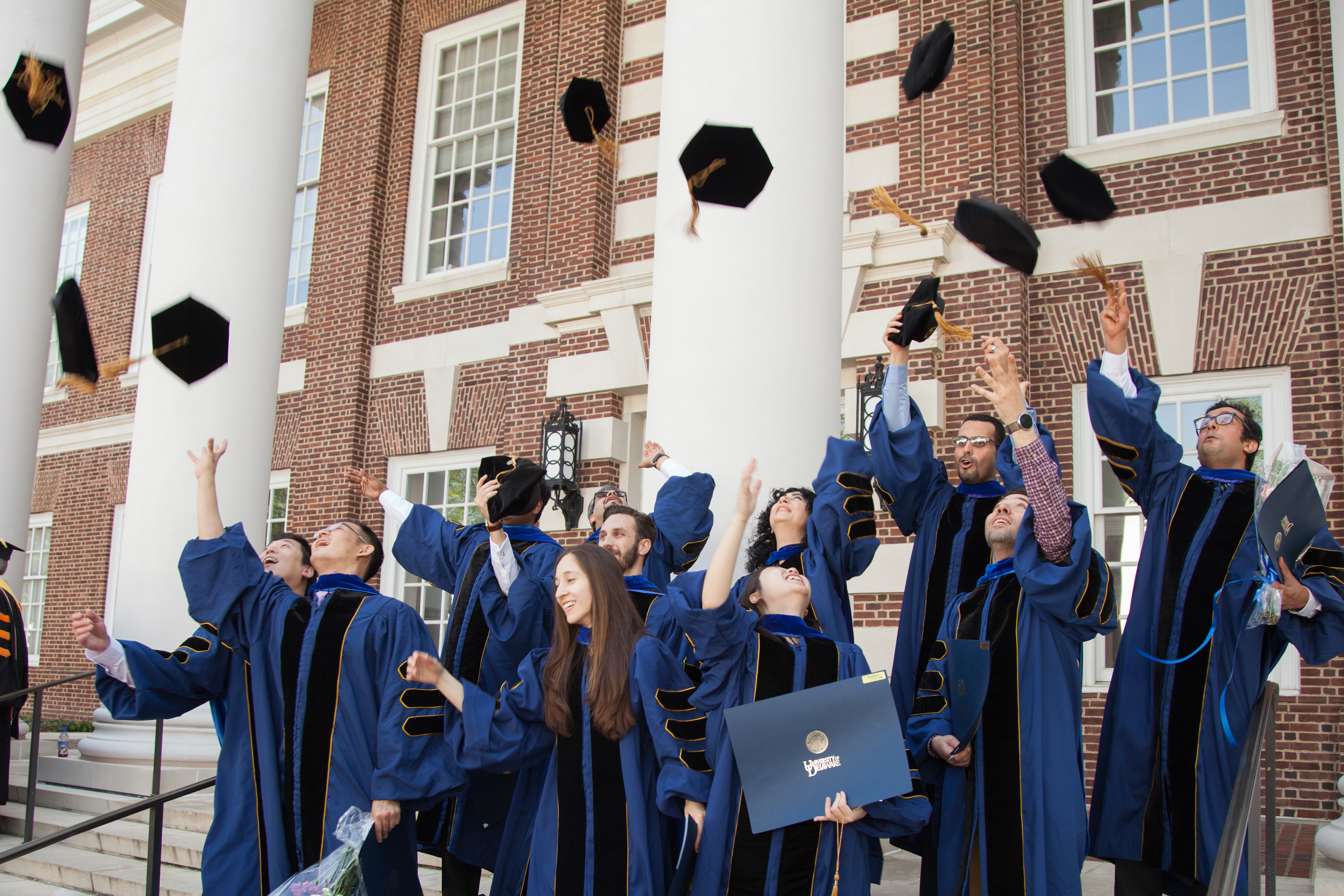

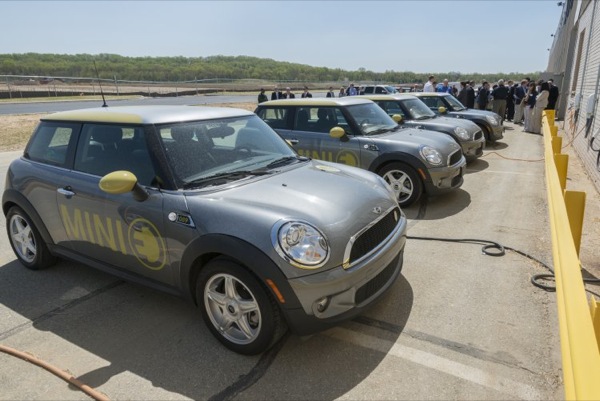
Technology milestone reached
Electric vehicles at UD earn revenue from power grid
2:43 p.m., May 2, 2013--Daring to be first, the University of Delaware, through its project with NRG Energy Inc., has proven for the first time that all-electric vehicles can give and take power from an electric power grid and get paid for the service.
Located on UD’s STAR Campus, the 15 vehicles officially connected with the grid in February. Since then, they have operated as a mini power plant, giving and taking electricity on demand.
Campus Stories
From graduates, faculty
Doctoral hooding
“It’s a certified, registered electric system resource that has all of the legal authority of a power plant,” said Willett Kempton, professor in the College of Earth, Ocean, and Environment (CEOE), research director for the Center for Carbon-free Power Integration and inventor of the innovative grid integrated vehicle technology.
Kempton’s vision for grid integrated vehicles began in 1997 when he and a UD graduate student published a paper about the technology. After doing much of the initial development himself, Kempton realized that his dramatically different plan bridging three industries -- automotive, energy and electronics -- needed more than academic publications to be realized. It required a dedicated campaign that included gaining support from the state legislature, changing public policies and building strong partnerships.
Collaboration and partnerships
To further develop Kempton’s technology and assess its technical and business potential, UD’s Office of Economic Innovation and Partnerships (OEIP) worked closely with UD’s Office of General Counsel to help form a partnership with NRG, one of the nation’s largest power generation and retail electricity businesses.
According to David Weir, director of OEIP, “The UD-NRG partnership has become part of a very effective network of research and development collaborations, involving a number of other commercial partners, working ‘hand in glove’ with the University faculty and student team, all focused on a milestone-driven playbook that has brought us to this significant stage in the project.”
“Working with a university was new for NRG,” said Scott Fisher, director of alternative energy sources at NRG. “Our partnership with UD has been a very positive experience. We have been given access to cutting-edge technology; highly capable, motivated students and faculty; and an administration committed to forming successful relationships with companies like ours.”
Partnerships and collaboration have been a hallmark of the project. BMW AG provided the vehicles and sent a senior electric vehicle technician from Munich, Germany, to live in Delaware and support the project. Electric grid operator PJM progressively adapted its rules to allow energy storage technologies to participate in the market; automobile retrofitter AutoPort Inc. fitted the standard production vehicles with the grid integrating technology; and Milbank Manufacturing Company built the charging stations to the required specifications. CEOE’s School of Marine Science and Policy helped advance necessary public policy changes and supported Kempton’s research.
“Our faculty in the College of Earth, Ocean, and Environment investigate human impacts on the environment and explore potential solutions,” said CEOE Dean Nancy Targett. “This electric vehicle project is an excellent example of how academic research can foster benefits to both society and the environment.”
The College of Engineering’s Department of Electrical and Computer Engineering (ECE) also played an important role in the project.
“We developed the electronics that perform the vehicle-to-grid technology functions inside the electric vehicles and in the electric charging stations,” said Fouad Kiamilev, professor of electrical and computer engineering, “and Milbank Manufacturing Company has licensed that technology.”
A technology milestone
The success of the electric vehicle-to-grid technology is an important new tool for stabilizing the nation’s electricity supply and developing energy independence. Currently in the U.S., as demands on the electricity system fluctuate, large generators ramp up and down quickly to adjust for the changes and to balance electricity supply and demand.
“We serve that same function,” said Kempton. “It’s an important service, this balancing service. It’s not a new service, but we are doing it in a very different way. Our system responds faster, is less expensive to operate and it does not burn fuel or create pollution. The batteries are storage devices, so we can take off excess electricity and we can push back when there is not enough. We are providing a power balancing service rather than power generation.”
The electricity stored in the vehicles’ batteries is controlled and aggregated by a centralized server, but to register the “power plant,” each charging station must be identified, certified and registered with the grid operator and local utility company — a major undertaking managed by NRG.
The road to the future
Kempton and his team are refining and optimizing the technology, and moving it toward commercialization. However, before it becomes available on a large scale, simplification of the registration process will be necessary. As progress on the project continues, Kempton would like to work with more electric car manufacturers to develop vehicles and high-quality designs that are compatible with the technology. Looking to the future, Kempton hopes to see at least 50 percent of electric vehicles capable of electric grid service and be contributing to a renewable, sustainable energy supply.
(High-ranking public and private sector leaders, government officials and numerous media outlets recently visited the STAR Campus to celebrate the technology milestone. For a recap of the event, please watch UD's video on YouTube.)
About the UD-NRG Partnership
In September 2011, the University and NRG Energy Inc. began work to move from research results to prepare to commercialize the technology, which provides a two-way interface between electric vehicles (EVs) and the power grid that enables vehicle owners to sell electricity back to the grid while they are charging their EVs.
On Feb. 27, 2013, the project took a major step forward when it became an official participant in PJM’s frequency regulation market. Frequency regulation is used to balance supply and demand on the grid second-by-second. Since then, the project has been selling power services from a fleet of EVs to PJM, a regional transmission organization that coordinates the movement of wholesale electricity and whose territory has 60 million people in the 13 Mid-Atlantic states.
Article by Laura Gleason
Photos by Evan Krape




